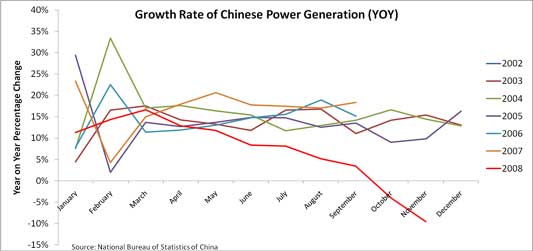Methane from sewage used for energy – while currently in use and much under discussion as a green (or greener) technology in fact is an early 20th century technology developed by the Scottish civil engineer John Duncan Watson.

Methane from sewage used for energy – while currently in use and much under discussion as a green (or greener) technology in fact is an early 20th century technology developed by the Scottish civil engineer John Duncan Watson.

Extreme How-To has an excellent piece by Monte Burch on solar tubes – essentially skylights without straight lines:A Tunnel for the Sun | Extreme How To, DIY – Do it Yourself, Home Improvement, Home Decorating.
Nathan Yau, a doctoral candidate at UCLA in statistics, is the proprietor of Flowing Data, an excellent blog about data visualization. My guess is that it would be fair to say that there’s a greater emphasis on quantitative data viz, rather than instructional or other non-quantitative work. In any case – it’s excellent.
 Came across Yau’s April post – “Data Visualization Blogs You Might Not Know About” which, in and of itself, is an excellent list. Add to that the contributions of the commenters, including the always excellent Jorge Camoes.Camoes added anoyhrt 15 listings; Tom Carden added over a dozen more; and a handful of people added one or two links. (As it happens, I’m trying to work out what for me is a visual representation of a complex argument – so I’m searching for a spot-on or really close analogy – hence my particular delight in finding such a collection). Take the post and comment together – and it’s much more than a starting point.
Came across Yau’s April post – “Data Visualization Blogs You Might Not Know About” which, in and of itself, is an excellent list. Add to that the contributions of the commenters, including the always excellent Jorge Camoes.Camoes added anoyhrt 15 listings; Tom Carden added over a dozen more; and a handful of people added one or two links. (As it happens, I’m trying to work out what for me is a visual representation of a complex argument – so I’m searching for a spot-on or really close analogy – hence my particular delight in finding such a collection). Take the post and comment together – and it’s much more than a starting point.
Here’s a link to Jorge Camoes’ charts blog; to Tom Carden’s blog (Random, etc.) – but if the subject is of interest, be sure to check out Nathan Yau’s work at Flowing Data.(this started as a somewhat longer post – but due to the vagaries of this particular WP 2.7 install – well, brevity is the soul of wit).
, created in XTimeline, a chrono-information tool.  graphic tool Good use of the timeline graphic – and a good primer on doctors without borders.
graphic tool Good use of the timeline graphic – and a good primer on doctors without borders.
Austhink, an Australian software firm, makes a package called Rationale, which makes it easy to create diagrams of rhetorical and decision-making processes. ![]()
I downloaded a trial version last-night – and immediately started using it to map risk risks associated with energy production. I plan on using it in my work here at Popular Logistics and elsewhere. Which is to say – I think I’m already using it for an off-label purpose.
It’s as easy to use as any graphics program – outputs to a variety of graphic formats. And so far, I’m quite impressed. Since we test software principally to recommend them to community-based groups on zero budgets – we’ve got a strong bias for free software – but at $69 USD this may be an exception.
The people at Austhink think this is an educational tool. They’re right about that – it could be used from grammar school on up. And certainly in law school. But I think it’s got applications in planning and risk assessment.
Worth a look. Learned about this at Social Source Commons.
Andrews S. Revkin reports on Dot Earth that Chinese energy use has declined more or less following economic activity.

Good news or bad? Depends on what’s happening with Chinese energy infrastructure while its economy contracts. Our guess – and it’s a guess – is that high energy prices provide an incentive to switch to clean, sustainable energy. Air quality, of course, is inversely proportional to the use of fossil fuels and nuclear power.
The Dot Earth Project (at our hometown paper) – and Mr. Revkin’s work– are supported in part by the John Simon Guggenheim Project. We’ll try to keep up with it.
Our first experiment at displaying data in this way. NB: ((Nota Bene, or “take note” – Lat.))
With those caveats – based on current FEMA data:
| State | Population served per team |
| New Jersey | 20,437 |
| Wyoming | 29,046 |
| Mississippi | 31,726 |
| North Dakota | 31,986 |
| Rhode Island | 36,477 |
| Maine | 36,589 |
| Utah | 37,790 |
| South Dakota | 39,811 |
| Missouri | 41,108 |
| Massachusetts | 46,401 |
| Vermont | 47,789 |
| Total | 31,161 |
| Idaho | 55,533 |
| Texas | 57,325 |
| New Hampshire | 69,254 |
| Oregon | 76,479 |
| Kansas | 81,647 |
| Iowa | 85,373 |
| North Carolina | 87,971 |
| Florida | 89,030 |
| Kentucky | 90,244 |
| Washington | 95,124 |
| Connecticut | 103,009 |
| Oklahoma | 106,392 |
| Montana | 106,429 |
| Tennessee | 111,940 |
| West Virginia | 113,252 |
| Louisiana | 116,033 |
| Ohio | 118,216 |
| South Carolina | 119,127 |
| Michigan | 122,827 |
| Arkansas | 123,252 |
| Indiana | 129,496 |
| Arizona | 132,057 |
| Alaska | 136,696 |
| California | 145,052 |
| Minnesota | 157,504 |
| Alabama | 159,581 |
| Nebraska | 161,325 |
| Virginia | 175,275 |
| Georgia | 207,495 |
| Colorado | 231,501 |
| Maryland | 255,379 |
| New Mexico | 281,416 |
| Nevada | 285,042 |
| Illinois | 313,477 |
| Hawaii | 427,796 |
| New York | 438,585 |
| District of Columbia | 588,292 |
| Pennsylvania | 592,038 |
| Puerto Rico | 657,063 |
| Wisconsin | 800,234 |
| Delaware | 864,764 |
Many thanks to Dannny Sanchez and his excellent table-to-html tool, Tableizer.
French police found a package of explosives at the Printemps department store complex in central Paris on Tuesday, a spokeswoman at Paris police headquarters said.
The spokeswoman, Mélanie Leprettre, said a warning about the explosives had been sent Tuesday morning to the French news agency Agence France-Presse, which alerted the police.
A previously unknown group demanding the withdrawal of French troops from Afghanistan claimed to have planted the explosive devices. Officials said that five sticks of dynamite had been found.
Explosives found at Paris department store – International Herald Tribune .
Pratik Mhatre’s Urban Planning Blog
is an outstanding blog, on the order of Inhabitat or The Pump Handle. Excellent recent articles include:
Time Spent Sitting In Traffic, including this infographic:
Disaster Preparedness and Voter Response [PDF link], an economist at Loyola Marymount University concludes that “on average, every $1 spent on disaster mitigation prevents roughly $8 of disaster damage over the following five years” but voters tend to reward disaster response and recovery efforts more as compared to disaster preparedness leading to governments underpreparing for disasters.
IdeaTree is an on-line mind-mapping and knowledge-mapping application which has decision-making/voting features that I don’t believe exist – in that combination – in any other application.
And – on first use – it’s pretty easy to use. Worth consideration for the planning and problem-solving toolbox. And likely a good way to substitute for certain types of on-line meetings, in-person meetings and for the “infinite email round robin” we’ve all participated in.
Flu Wiki is what it sounds like – a wiki devoted to influenza. There’s some useful information here – and I suspect that when things heat up on this issue, the wiki gears up as well. Which is as it should be.
By Washington Post Staff Writer Del Quentin Wilber, dated 12/6/08:
Judge Imposes 5-Year Term for ‘Lowdown’ Scam,
A former employee of the Federal Emergency Management Agency was sentenced yesterday to more than five years in federal prison for stealing the identities of 200 people, some of them disaster victims.
In April, Robert W. Davis, 44, of Southeast Washington pleaded guilty in U.S. District Court in Washington to charges of wire fraud and aggravated identity theft in a four-year scheme that ended in November 2007. Prosecutors said Davis used the identities to purchase items ranging from diamond watches and other jewelry to steaks and lobsters.
Davis stole identities while working at mortgage companies and as a human resource specialist at FEMA, authorities said. About 30 stolen identities belonged to people trying to get disaster assistance, federal prosecutors said.
– snip –
[Judge] Walton said that while he understood Davis had a difficult childhood, he noted that he had been convicted four previous times of theft and fraud. He also pointed out that Davis wasn’t using the lines of credit just to finance a drug habit. “That wasn’t about drugs,” Walton said. “That was about living good.”
Thanks to Sonya Geiger at the Disaster Accountability Project for spotting this one.
Unplggd has a flashlight roundup
– several are plugin-constant standby – one solar powered, one hand-cranked. All worth a look. However, I’m not giving away my Safe-Light anytime soon , and in fact have been considering purchasing them in bulk. Have done some stupid things – like drive long distances without a flashlight or jumper cables – but I change batteries about once a year.
They’ve got a number of variations on the same idea – if you’re going to carry one, though, I’d recommend The Safe-Light Super Bright With Coloured LED- in red – as the best way to see and
maintain your night vision in an emergency.
The British firm Helicoid
– which incldes the developer Alex Young – has come up with a number of fascinating applications: I’ve looked at two in the last two days – both excellent – I’m reluctant to put them in categories so I’ll just describe them: DeadLine and Helipad. Please note that at first I was thinking of  the image of a helipad (helicopter pad); but the firm is named for a helicoid, a geometric shape which resembles Archimedes’ screw, but extends infinitely outwards (and thus is not appropriate for small apartments, although they’re otherwise fairly easy to care for).
the image of a helipad (helicopter pad); but the firm is named for a helicoid, a geometric shape which resembles Archimedes’ screw, but extends infinitely outwards (and thus is not appropriate for small apartments, although they’re otherwise fairly easy to care for).
Helipad is a note-taking application which, on first use, makes it much easier to categorize and organize information than Google Notebook – which, with index cards, Notebook++ for code, my Olympus digital recorder and Dragon v10, are my primary note-taking tools ((the latter are recent additions, resulting from a canine invasion of workspace while using a circular saw, attempts to separate aforementioned canine from the path of falling wood, and the ensuing hand surgery. But they may stay in the tool box, as I’m getting used to them.))
Deadline is an easy to use deadline manager – and will alert you via email, mobile phone, and, now Google Calendar. It features a clean, simple interface. I don’t know yet if it can be used to notify multiple users – although I believe it would work if a Google Group had a Deadline account.
Both are free and have very shallow learning curves. In other words, you can be using them in minutes. Since it’s my wife who can’t remember our anniversary, and not me, maybe I’ll get her a Deadline account next.
Four sources of excellent applications – the main criteria being that each of them pointed me to outstanding software I’d never heard of:
ReadWriteWeb appears to publish annual lists of applications for students. Check out Web 2.0 Backpack: Web Apps for Students and Back to School: 10 Great Web Apps for College Students
. They’re not all web apps, so if you have intermittent net access, these lists are still very much
worth checking out. They may not do this every day – that’s my impression – but these compilations are outstanding. We learned about them from AcademHack.
– a resource for academics trying to navigate the world of computing and technology” – is another excellent resource. They don’t do as much “compiling” – but things are well organized by subject.
The Digital Research Tools (DiRT) wiki is similarly outstanding, with a taxonomy that seems carefully designed to make sure that overlapping function descriptions won’t stop you from finding what you need.
Finally – LifeHacker
. Usually my first stop for tech problems of many sorts – from inside the OS – to outside the box, especially cable clutter. In other words, they’re living in the same tripping-on-cables and-what-about-the-damned DC-converters world we are.
Aggregate these four sites – share them, master what you need – and you and your friends will be dangerous info-ninjas.
Thanks to Kristarella – who led me to Academhack
, and the Thesis Theme community – which which led me to Kristarella. Watch this space for a transition to Chris Pearson’s Thesis Theme
, currently in testing mode.